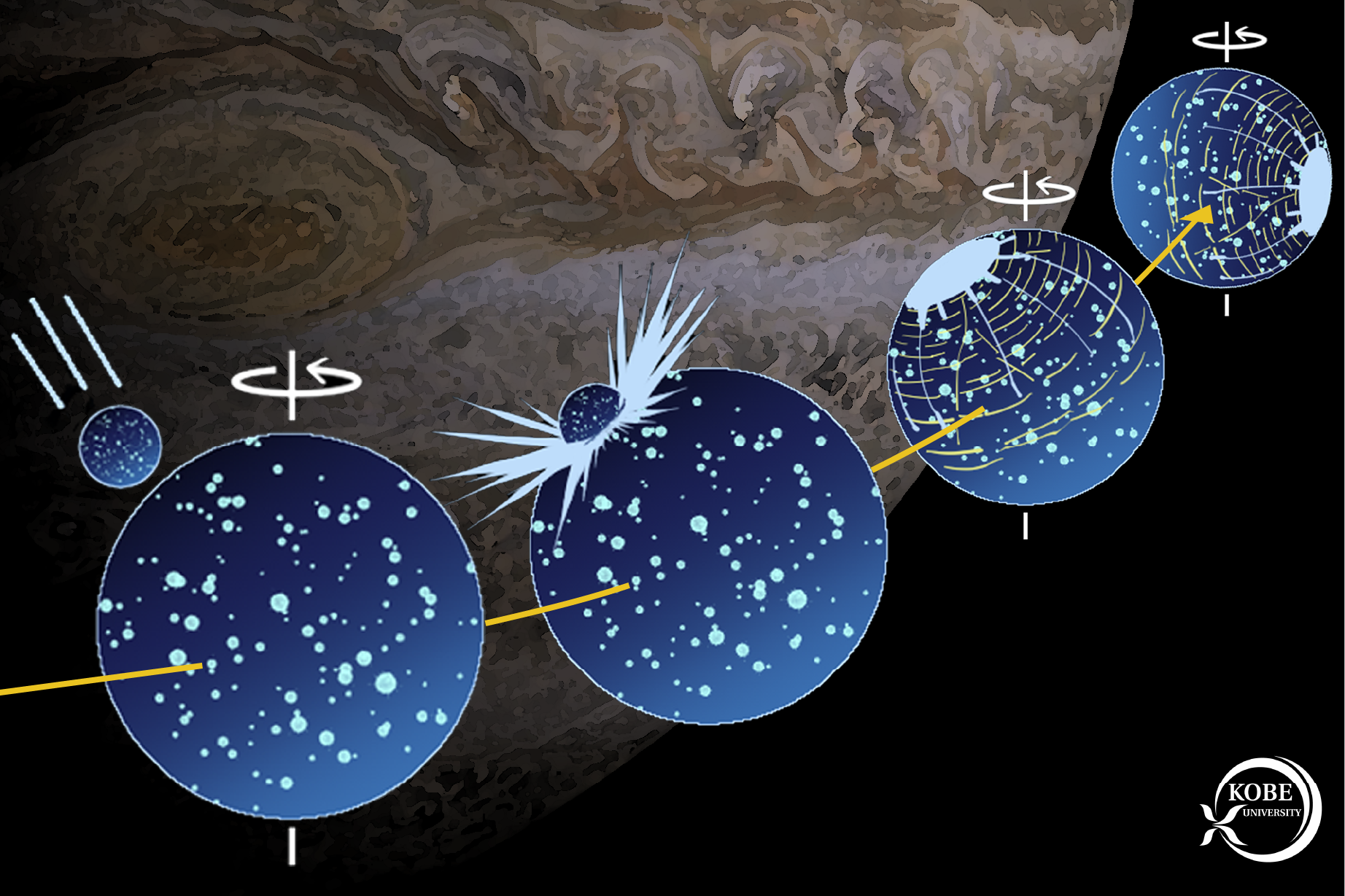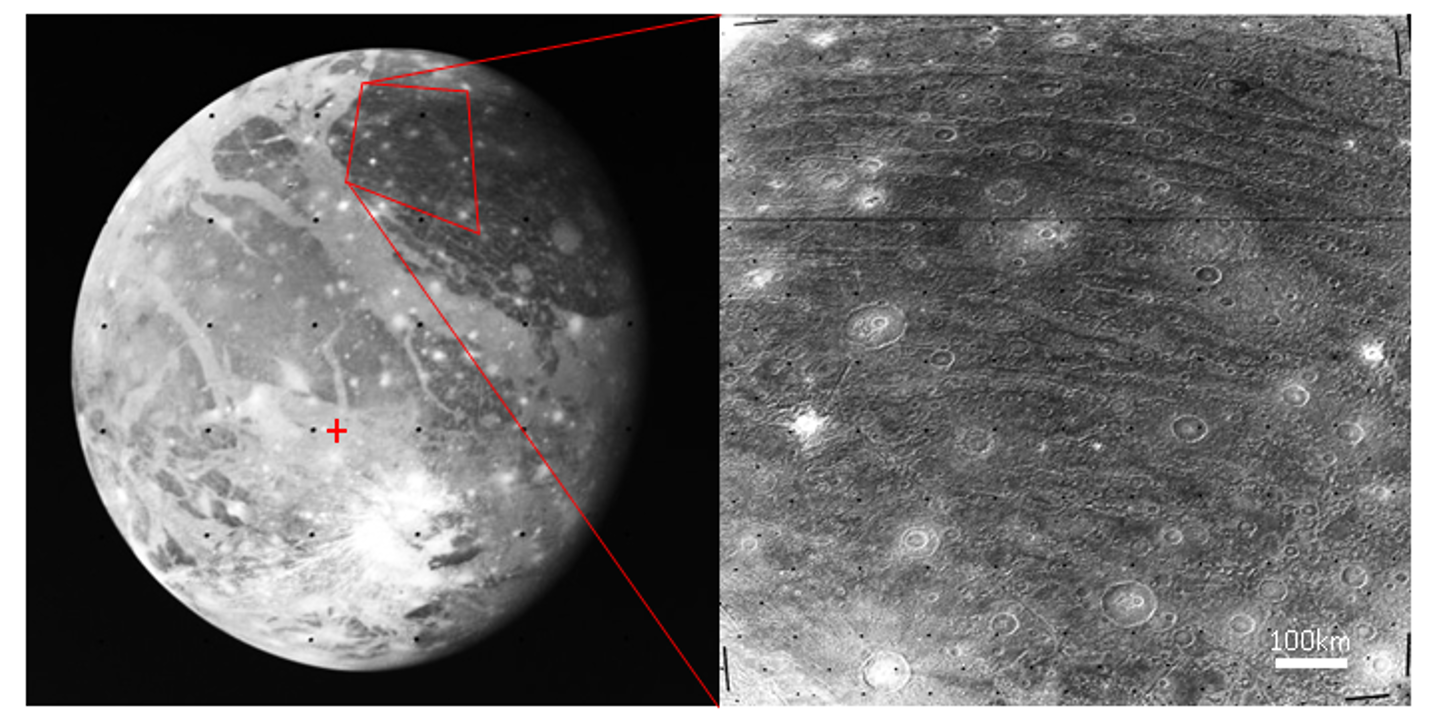Ganymede is not only the largest satellite of Jupiter and the biggest moon in the Solar System, but it is the only moon with its own magnetic field and is also tidally locked, meaning it always shows Jupiter the same face just like our Moon does to us. On the far side of Ganymede, there is evidence of a colossal crater – evidence of an impact that changed the distant world forever.
It all started about 4 billion years ago. An asteroid – about 20 times larger than the space rock that killed the dinosaurs, with a radius of 150 kilometers (93 miles) – created a transient crater with a radius of at least 700 kilometers (435 miles), big enough to contain one-sixth of the United States. But that is not all that it did.
This impact would affect the interior structure of Ganymede significantly
Prof Naoyuki Hirata
Ganymede is believed to possess a liquid ocean under a thick shell of ice and rock, much thicker than fellow Jovian moon Europa. The impact might have been involved in the formation of this ocean, and it was so dramatic that changed the revolving axis of Ganymede. Over time, the singular scar of this impact ended up facing away from Jupiter.

Artist’s impression of the impact on Ganymede and the moon’s successive realignment.
Image Credit: HIRATA Naoyuki
“This impact would affect the interior structure of Ganymede significantly, because the size of the transient crater reaches 25 percent of the size of Ganymede. Also, it is known that the reorientation can itself cause significant heating in the interior due to tidal dissipation. Those would be potentially associated with the origin of Ganymede’s interior ocean. I plan to study this topic as my future research,” study author and planetologist Naoyuki Hirata, Assistant Professor in the Department of Planetology at Kobe University, told IFLScience.
The simulations created by Hirata are intriguing. It doesn’t appear to matter where the impact might have occurred: as long as it was that sizable, the moon will have ended up reorienting itself in the direction we find it today.

Ganymede is covered in structures known as furrows (right). They form concentric circles around one specific spot (left, red cross). This led researchers in the 1980s to conclude that they formed from a major impact.
Image Credit: HIRATA Naoyuki
There are many unknowns about Ganymede, so the research provides some possible insight. But without more observations, it will be very difficult to confirm this and future work. Luckily, we do not have to wait too long – the European Space Agency’s JUICE mission will get to Jupiter in 2031 to study Ganymede, Europa, and Callisto. In 2034, it will become the first ever spacecraft to orbit a planet’s moon as it begins its in-depth observational campaign of Ganymede.
“I am really looking forward to the data from the JUICE. The Voyager 1/2 and Galileo spacecraft have observed Ganymede, however, many areas of Ganymede still have not been imaged with sufficient resolution,” Hirata told IFLScience. “The current accuracy of the gravity and topography measurements of Ganymede are none or very insufficient. Future explorations would reveal a remnant of topographic profiles or gravity anomalies associated with the furrow-forming impact and the reorientation of Ganymede, which would provide insights into this giant impact and Ganymede’s early history.”
A paper discussing this work is published in the journal Scientific Reports.
Source Link: One Of The Biggest Impacts In The Solar System Changed Its Largest Moon Forever